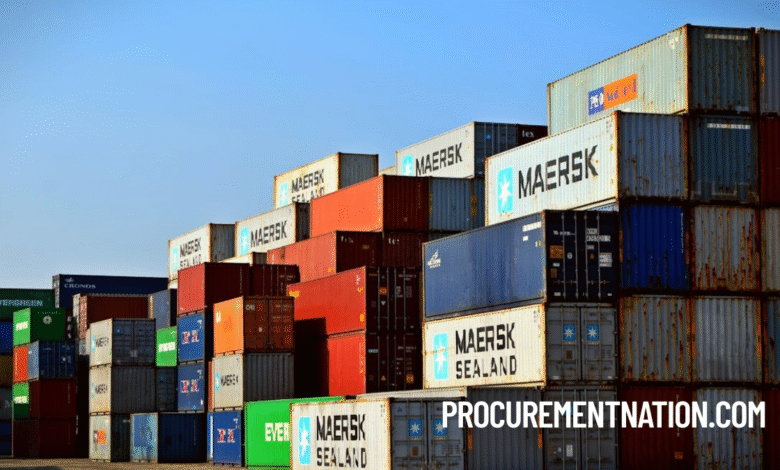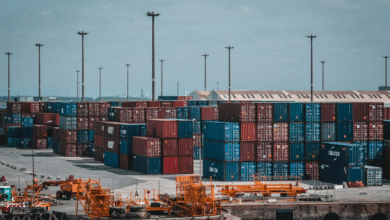Understanding the Supply Chain of E-commerce Giants Like Amazon

In today’s fast-paced digital world, e-commerce giants like Amazon have become household names, providing consumers with virtually anything they want, delivered right to their doorsteps. But behind these seamless transactions lies an incredibly complex and highly efficient system—the supply chain. Understanding the supply chain of e-commerce giants like Amazon gives us insight into how they manage to deliver millions of products daily, often with remarkable speed. From warehouses to advanced logistics, every piece plays a vital role in ensuring customer satisfaction. Let’s dive deeper into how these e-commerce giants manage their supply chain to maintain a competitive edge.
What is a Supply Chain in E-commerce?
A supply chain in e-commerce refers to the network of processes, resources, and partners involved in moving products from manufacturers to end customers. For online retail businesses, it is a crucial part of ensuring that products are available, orders are fulfilled, and deliveries are made on time. Unlike traditional retail stores, e-commerce businesses operate primarily online, which means their supply chains must be digital-first, optimized for speed, and capable of handling massive volumes of transactions. Understanding the supply chain of e-commerce giants like Amazon reveals how their network of suppliers, warehouses, and delivery systems work together to meet consumer demands in real time.
Key Components of Amazon’s Supply Chain
Amazon’s supply chain is a model of efficiency, supported by several key components. These include:
Warehouses and Distribution Centers
Amazon operates vast fulfillment centers across the globe, where millions of products are stored, sorted, and prepared for shipment. These centers are strategically located to reduce delivery times and ensure fast service for customers.
Technology and Automation
Advanced technology, including robotics and machine learning, helps Amazon streamline its operations. Automated systems sort and pick products, making the process faster and reducing human error.
Logistics Network
Amazon has developed an extensive logistics network, including transportation hubs and delivery fleets, to ensure timely product delivery. This network supports their ambitious delivery promises, such as same-day and two-day shipping for Prime members.
Last-Mile Delivery
The final leg of delivery—often the most challenging and costly—is crucial in Amazon’s supply chain. They have built a vast network of delivery partners to ensure rapid delivery, from drivers to drones in the future.
How Technology Support Amazon Supply Chain
When we talk about the supply chain of e-commerce giants like Amazon, one word stands out: technology. Amazon has leveraged cutting-edge innovations like robotics, artificial intelligence (AI), and machine learning to revolutionize its supply chain operations.
- Robotics and Automation: In Amazon’s fulfillment centers, robots assist with tasks like picking and sorting products. These robots are capable of moving goods across the warehouse floor, reducing the time it takes to fulfill orders. The integration of AI allows these robots to learn and improve their processes, creating an efficient, self-sustaining environment.
- AI and Machine Learning: Amazon uses AI for predictive analytics, helping forecast demand and optimize inventory levels. Machine learning algorithms assist in identifying patterns that enhance efficiency, from adjusting product placements in warehouses to predicting the fastest delivery routes.
Inventory Management: A Balancing Act
One of the most challenging aspects of running an e-commerce business is inventory management. Amazon must constantly balance product availability with the risk of overstocking. With millions of products available for sale, ensuring that customers can always find what they want without holding excessive inventory is a delicate act.
Amazon uses sophisticated algorithms and data analytics to track inventory levels in real-time. This system helps them determine when to restock items, preventing both shortages and surplus. Through a process called “just-in-time” inventory management, Amazon ensures that products arrive just before they are needed, optimizing warehouse space and reducing storage costs.
Understanding the supply chain of e-commerce giants like Amazon reveals that it’s not just about having stock on hand—it’s about having the right amount, in the right place, at the right time.
The Role of Fulfillment Centers and Warehouses
Amazon’s fulfillment centers are the heart of its supply chain. These massive warehouses are where the magic happens. Products from various manufacturers are shipped to these centers, sorted, stored, and then shipped out to customers. The scale of Amazon’s fulfillment centers is staggering, with some spanning over a million square feet.
These centers are equipped with state-of-the-art technology, including conveyor belts, robotics, and advanced inventory systems, to ensure that products are picked, packed, and shipped quickly. These massive facilities are strategically located near key urban areas, helping Amazon to cut down on delivery times and reduce costs associated with shipping.
Logistics and Last-Mile Delivery: Speed Matters
Speed is one of the defining factors of Amazon’s supply chain, and a significant part of this speed comes from its logistics network. The company’s ability to deliver products within hours, often the same day or the next day, sets it apart from many competitors.
Amazon’s Prime service, which guarantees fast delivery, has become a significant driver of consumer loyalty. To make this possible, Amazon has invested heavily in its logistics infrastructure. This includes everything from fulfillment centers and regional hubs to its fleet of trucks, delivery vans, and even drones.
The Impact of Third-Party Sellers on Amazon’s Supply Chain
Amazon’s platform allows third-party sellers to list their products, creating an extensive marketplace that expands Amazon’s inventory without directly handling each item. However, the role of third-party sellers in Amazon’s supply chain goes beyond just listing products. Through Fulfillment by Amazon (FBA), sellers can send their products to Amazon’s fulfillment centers, where Amazon takes care of storage, packing, and shipping.
This system integrates seamlessly into Amazon’s supply chain, ensuring that third-party products benefit from the same fast shipping and customer service that Amazon offers. FBA helps sellers scale their businesses without having to manage the logistics side, making Amazon an even more integral part of the global e-commerce ecosystem.
Challenges in Managing a Global Supply Chain
Despite Amazon’s success, managing a global supply chain comes with its own set of challenges. Delays can occur at various points, from manufacturing to shipping. Customs regulations, weather disruptions, and global events like the COVID-19 pandemic can all cause significant setbacks.
For instance, the pandemic led to global shipping delays and inventory shortages. Understanding the supply chain of e-commerce giants like Amazon highlights the importance of agility and preparedness in the face of unforeseen disruptions. While Amazon has invested heavily in mitigating risks, challenges will always exist in a global supply chain, requiring constant adaptation and innovation.
Sustainability Efforts in Amazon’s Supply Chain
In recent years, Amazon has been making strides toward a more sustainable supply chain. The company has committed to net-zero carbon emissions by 2040 and has introduced various eco-friendly initiatives. These include investing in electric delivery vehicles, exploring alternative packaging solutions, and using renewable energy to power fulfillment centers.
Amazon also works on reducing the carbon footprint of its vast logistics network, with plans to make its entire supply chain more environmentally responsible. Understanding the supply chain of e-commerce giants like Amazon shows that sustainability is now a central focus of their operational strategy.
Lessons Small Businesses Can Learn from Amazon
While Amazon’s supply chain is massive, there are valuable lessons that smaller businesses can apply to their own operations. From efficient inventory management to the use of technology, even small e-commerce companies can benefit from implementing some of the same practices.
For instance, investing in automation, whether through inventory management software or AI-driven customer service tools, can significantly streamline operations. Furthermore, focusing on customer satisfaction through fast and reliable delivery, like Amazon’s Prime service, can help smaller businesses build loyalty and compete in an increasingly crowded market.
Conclusion
As e-commerce continues to grow, so will the complexity of managing supply chains. Amazon’s success lies in its ability to adapt and innovate, using technology to optimize processes and meet the ever-increasing demands of consumers. The future of e-commerce supply chains will likely see even greater advancements in automation, artificial intelligence, and sustainability. Understanding the supply chain of e-commerce giants like Amazon provides valuable insight into the future of online retail, where speed, efficiency, and customer experience will remain at the forefront of success.





One Comment